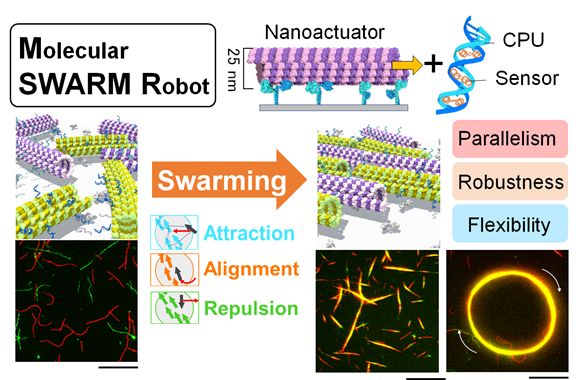Let the robot swarms begin!
- Written by ACN Newswire - Press Releases
Scientists are looking for ways to make millions of molecule-sized robots swarm together so they can perform multiple tasks simultaneously.
Tsukuba, Japan, June 19, 2020 - (ACN Newswire) - Multi-disciplinary research has led to the innovative fabrication of molecule-sized robots. Scientists are now advancing their efforts to make these robots interact and work together in the millions, explains a review in the journal Science and Technology of Advanced Materials.
"Molecular robots are expected to greatly contribute to the emergence of a new dimension in chemical synthesis, molecular manufacturing, and artificial intelligence," writes Hokkaido University physical chemist Dr. Akira Kakugo and his colleagues in their review.
Rapid progress has been made in recent years to build these tiny machines, thanks to supramolecular chemists, chemical and biomolecular engineers, and nanotechnologies, among others, working closely together. But one area that still needs improvement is controlling the movements of swarms of molecular robots, so they can perform multiple tasks simultaneously.
Towards this end, researchers have made molecular robots with three key components: microtubules, single-stranded DNA, and a light-sensing chemical compound. The microtubules act as the molecular robot's motor, converting chemical energy into mechanical work. The DNA strands act as the information processor due to its incredible ability to store data and perform multiple functions simultaneously. The chemical compound, azobenzene derivative, is able to sense light, acting as the molecular robot's on/off switch.
Scientists have made huge moving ‘swarms' of these molecular robots by utilizing DNA's ability to transmit and receive information to coordinate interactions between individual robots. See the video below.
Copyright 2020 ACN Newswire. All rights reserved. www.acnnewswire.com
Authors: ACN Newswire - Press Releases
Read more //?#


